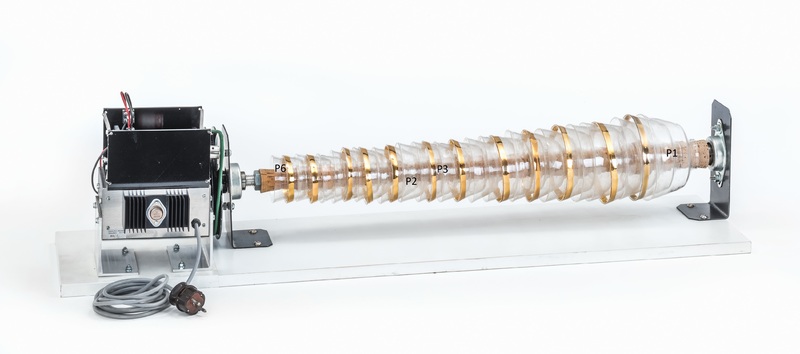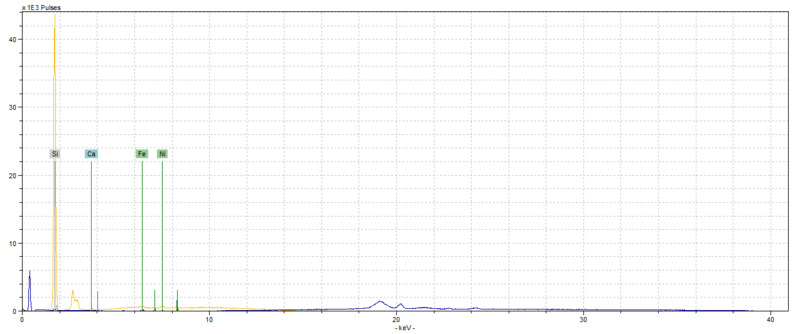Glass harmonica, Gerhard Finkenbeiner
Waltham, MA, USA 1983, Inv. No. 1988-1
XRF was conducted on four different spots of the harmonica in ambient conditions. The resulting spectra matched clearly, which reflects the homogeneity of the glasses used. Consequently, the interpretation of only one measurement taken from the glass in the instrument (P1) was justifiable.
The spectra resulting from the XRF analysis on the glass harmonica reflect the purity of the quartz glass, that Gerhard Finkenbeiner verifiably used for his instruments. According to the manufacturing website, natural quartz crystals were pulverized, purified and fused, resulting in a 99% silicon dioxide glass. (-, o.O., Alda 1998). Only traces of calcium, iron and nickel were detected.
Glasses of the described composition are very stable and not susceptible to humidity or light.
Click here for more information on the glass harmonica.
Citation: Charlotte Holzer, ‘Findings from Non-destructive Material Analysis on Musical Glass Instruments’, in: Materiality of Musical Instruments. A Virtual Exhibition.



